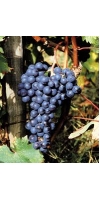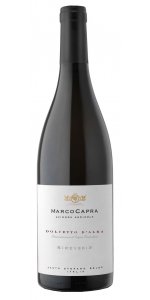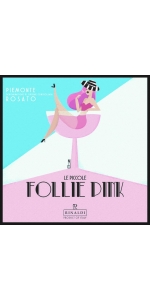Dolcetto

Dolcetto in Italian, translates to “little sweet one”, and is a red wine grape from the Northwest region of Italy. Unlike its name, Dolcetto does not produce sweet wines, but the name rather reflects the low acid nature of the grape. Doletto is a dark skinned grape that is fairly simple to grow and ripens early. While the Dolcetto grape is common in the Italian Monferrato hills and the Piedmont region, it has grown in popularity in Australia and the United States. In Piedmont, Dolcetto is known as Ormeasco, and thus used in the production of Ormeasco di Pornassio. Nebbiolo and Barbera are first and foremost in Piedmont, followed up by the use of Dolcetto. It is typically grown in cooler climates, which helps retain acidity, and in high elevation. Dolcetto will produce a very fruit-forward wine with rich red or purple colors. The palate will be spicy and earthy with flavors of almond or walnut. They have relatively low acidity, and soft tannins, however it can leave you wanting more in terms of aroma. Dolcetto is very easily consumed young and fresh, which gives an advantage over the more popular Nebbiolo grape. Dolcetto can be cellared for up to four years.
Capra Marco Sireveris Dolcetto d'Alba is made from 100% Dolcetto.
Color: deep, bright ruby red with violet hues.
Bouquet: vinous, fruity and fragrant, with notes reminiscent of ripe cherries.
Flavour: full, dry flavour with a pleasantly bitter aftertaste, typical of this variety.
A wine for drinking throughout a meal, it is perfect with cured meat and cheese snacks, ideal with rice and pasta dishes or with red meat, all combinations which enhance its delightful suitability for drinking.
Rinaldi Follie Pink is made from 50 % Dolcetto, 45 % Merlot, and 5 % Brachetto.
Fresh, fruity with hints of Strawberry and Cherry.
This is a great wine for Aperitif.
Review:
"Here’s a delightful aperitif wine to brighten your spirits as you prepare dinner or relax on the patio. Flavors of strawberries and raspberries throw a party in your glass and will bring a smile to your face. The blend is dolcetto and merlot, with a little brachetto. - Dave McIntyre"
- Washington Post (May 2020), Exceptional *** - Great Value
- back
Selected Options
Grape Types
Categories
Pricing
Countries
Regions
Grape Types
Wineries
Organic/Free Shipping
“1752” is the name of the Damilano Barolo Cannubi Riserva, in honor of the year in which the historic bottle was first marked “Cannubi”. It still exists today perfectly conserved by the Manzone family in Bra, close to Barolo. The bottle is clearly marked as being of “1752” vintage, indicating that Cannubi historically precedes Barolo.
About the Vineyard:
The Cannubi Cru is in found within one of the 6 core zones which comprise a UNESCO heritage site in Italy. A mixture of Tortonian and Helvetian calcareous marl gives the grapes intense aromas of cherry, plum and tobacco, rose and violet in sequence. Its low potassium and high calcium/magnesium content offer the wine a fine and polished touch. The vineyard is located at about 270 m. a.s.l. and has a south-east sun exposure. Barolo Riserva Cannubi 1752 It is a small plot of about 2 hectares of Nebbiolo vines, currently between 30 and 50 years of age.
Tasting Notes:
Garnet ruby red in color, the bouquet is intense and balanced, with notes of violet, red fruit, cherry and plum, spices, liquorice, cocoa, leather and tobacco. Dry, robust, full-bodied, very persistent, rich and velvety
Food Pairing:
This wine is excellent with typical piedmontes pasta (tajarin, ravioli); perfect with red meat, braised and roast meat, game and absolutely ideal with all types of cheeses.
Review:
“Incredible, reserved ripeness and depth already evident on the nose after one whiff, offering plum, cedar, rose hip, sandalwood, and licorice. Full-bodied with superb depth of fruit and an abundance of polished tannins that give the wine poise and grace, even though it’s long and powerful. The quality of the tannins are exceptional. Sheer and refined. This comes from the center of Cannubi.”
-James Suckling 99 Points
This classy and poised Pinot Noir displays an array of dark berry notes, including raspberry, blackberry, blueberry, and ripe cherry, along with a hint of baking spices. Balanced tension and refined tannins on the palate make the wine both elegant and effortlessly delicious, with subtle flavors of cedar and cassis lingering on the finish.
Review:
Bright and perfumed aromas of raspberries, potpourri and orange peel. The palate is medium-bodied with fine tannins and bright acidity, giving notes of blackberry bush, dried herbs and earth. Balanced and fresh.
- James Suckling 93 Points






